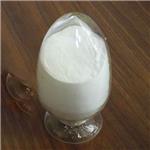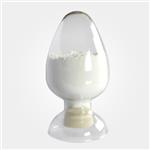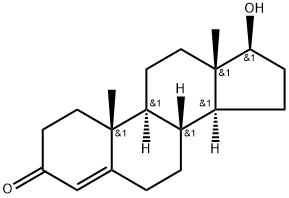Testosterone, a kind of sterol hormone
Introduction
Testosterone is a kind of sterol hormone, which is secreted by male testis or female ovary, and a small amount of testosterone is also secreted by adrenal gland. It can maintain muscle strength and quality, maintain bone density and strength, refresh and improve physical fitness. The molecular formula of testosterone is c19h28o2. Testosterone is a secretory glycoprotein originally identified from mouse testicular Sertoli cell enrichment medium. It is a cytoskeleton associated protein with small molecular weight, which can be closely bound to the cell surface through receptor associated protein[1].
Medical use: testosterone is used in the replacement treatment of non testosterone, male climacteric syndrome, impotence and other diseases. Testosterone can increase the number of muscles. Some people who exercise to increase the number of muscles even use 250 times the therapeutic dose. Testosterone can be used in biochemical research; Testosterone is a natural male hormone, which controls the development and growth of male sexual organs and male parasexuality.

Picture 1 Testosterone tablets
Radioimmunoassay of testosterone
Testosterone is mainly produced in the interstitial cells between the lobular seminiferous tubules of the testis, and can also be synthesized in the adrenal cortex. When h-testosterone and testosterone antibody are added to the sample, competitive inhibition will occur. In the reaction system, when the amount of h-testosterone and its antibody remains constant, the formation amount of labeled antibody complex is restricted by the amount of unlabeled antigen. Seperate with dextran and membrane activated carbon to separate the bound labeled antigen from the free labeled antigen, determine the binding part of the precipitation, and count (DPM) with liquid scintillation meter. Compared with the standard, Calculate the content of unknown samples. Sample pretreatment: male take 0.05ml plasma, female take 0.5ml, add 0.1mol/l sodium hydroxide, 0.2ml and 5ml dichloromethane, shake violently for 3 ~ 5min, suck off the plasma layer, wash the dichloromethane layer twice with distilled water, 1ml each time, centrifuge (1500r / min) for 3min, suck out 1ml of dichloromethane solution, blow dry in 45 ℃ water bath, and make radioimmunoassay.
Testosterone can be used in clinical tests
Serum T level in type 1 diabetes and type 2 diabetes patients were significantly decreased, and serum T level was negatively correlated with blood glucose concentration and duration. It is found that testosterone has a significant protective effect on islet cells, and t can not only increase the expression of IL-1 β Inhibit the secretion of islet cells, and can significantly promote the synthesis of insulin.
The increase of serum T in men can be seen in the following diseases: Leydig cell tumor, true precocious puberty, familial incomplete pseudohermaphroditism type II, complete or incomplete testicular feminization, male infertility syndrome, Reifenstein syndrome, and the application of androgen drugs such as phenytoin sodium and danazol.
The decrease of serum T in men can be seen in the following diseases: congenital seminiferous tubule hypoplasia (Klinefelter syndrome), azorchidism, cryptorchidism, interstitial cell hypoplasia or hypoplasia and other primary male sexual dysfunction; Hypothalamic pituitary diseases such as hypogonadotropic hypogonadism, simple LH deficiency, obese reproductive incompetence syndrome (forehlish syndrome); Hyperprolactinemia, hypercortisolism, due to 3 β- Congenital adrenal hyperplasia caused by the lack of enzymes such as hydroxysteroid dehydrogenase and 17 hydroxylase; Drugs that inhibit testosterone synthesis, such as aminodoxine, spironolactone, cannabis, ketoconazole and dichlorobenzene dichloroethane, were used.
Some polycystic ovary syndrome, theca cell hyperplasia, ovarian masculine tumor, congenital 21 hydroxylase and 11- β Hydroxylase deficiency. Female patients with adrenal cortical hyperplasia may have elevated serum testosterone levels.
Pharmacological action of testosterone
Testosterone is a natural androgen. Its propionate is used clinically, which is generally called testosterone propionate. A variety of pure and effective sex hormones that can be extracted from male urine are secreted by testicular stromal cells, collectively referred to as androgens, the most important of which is testosterone. The testis is not the only organ that secretes testosterone. There is also a small amount of secretion in the adrenal cortex and women's ovaries. Although testosterone is easily absorbed after oral administration, it is rapidly damaged by the liver and can not play any pharmacodynamic role. The androgens currently used in clinic are all synthetic products. In addition to the role of androgen, testosterone also significantly promotes protein synthesis, also known as assimilation. It is found from some testosterone derivatives synthesized in modern times that the androgen activity of some derivatives is greatly weakened, while the assimilation remains the same and even strengthened. In order to distinguish it from real testosterone, these assimilating testosterone are called assimilating hormones.
Testosterone can promote and maintain male secondary sexual characteristics. Testosterone can restore and maintain positive nitrogen balance. Testosterone can reduce the excretion of chlorine, nitrogen, phosphorus, potassium and sodium in men and some women. Testosterone stimulates the growth of bones, skeletal muscles, hair and skin. Qualcomm can increase erythropoiesis and promote angiogenesis and skin darkening. High dose testosterone can inhibit male gonadotropin secretion.
Pharmacokinetics of testosterone
Testosterone can be absorbed through gastrointestinal tract, skin and oral mucosa, but after oral administration, it needs to be metabolized through extensive first pass in the liver. Therefore, it is often administered subcutaneously or intramuscularly, or percutaneous. In plasma, only 80% of this product binds to sex hormone binding globulin, and can also bind to other proteins. Only 2% of them are not bound. Plasma T1 / 2 was 10 ~ 100 min. This product first oxidizes and metabolizes into androstenedione in the liver, and then becomes androstene and bencholanolone with low activity. However, it combines with glucuronic acid and sulfuric acid and is discharged with urine. About 6% of the original drug is recycled through intestine and liver and discharged with feces. This product can be transformed into dihydrotestosterone and estrogen with stronger activity in some target tissues. The ester compound of this product has low polarity, its oil is absorbed slowly after intramuscular injection, and is hydrolyzed into testosterone after absorption.
Reference
1 Eisenegger C, Haushofer J, Fehr E. The role of testosterone in social interaction[J]. Trends in cognitive sciences, 2011, 15(6): 263-271.
);You may like
See also
Lastest Price from Testosterone manufacturers

US $0.00/G2024-05-02
- CAS:
- 58-22-0
- Min. Order:
- 1G
- Purity:
- 99%
- Supply Ability:
- 20

US $9.90-380.00/g2024-05-02
- CAS:
- 58-22-0
- Min. Order:
- 1g
- Purity:
- 99.99%
- Supply Ability:
- 2 tons


